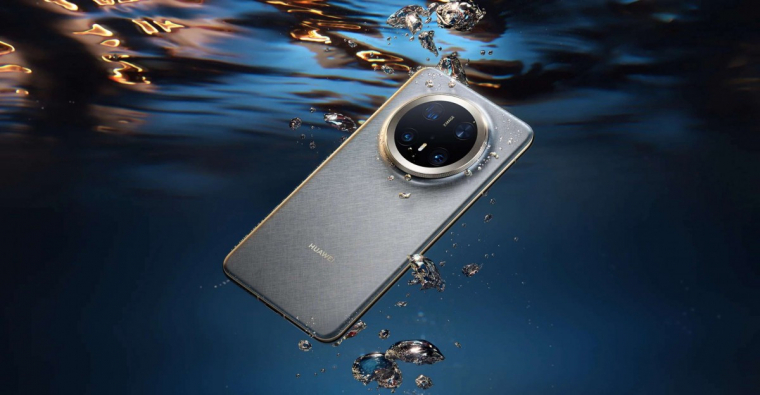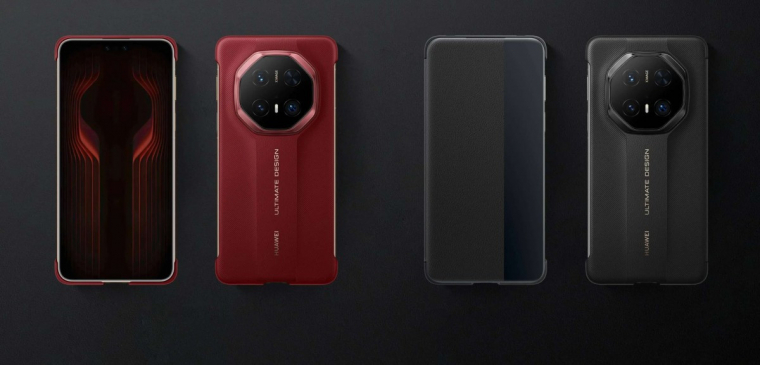Huawei presented the Mate 70 series with HarmonyOS Next operating system and Kirin 9100 chipset.
By now, a duopoly has emerged on the smartphone market, as no other operating system can compete with Android and iOS. However, compulsion encourages the search for new ways and creative solutions, which the sanctioned Huawei is well aware of. The Chinese manufacturer’s global mobile market plans collapsed in the blink of an eye, as soon as Google withdrew its support due to political pressure, and its devices were put at an almost impossible competitive disadvantage, which could not be fully compensated for either by technical innovations or user-friendly pricing.
For lack of a better option, Huawei decided to develop its own operating system, but HarmonyOS, which debuted in 2019, was still primarily based on the Android Open Source Project. In contrast, HarmonyOS Next, unveiled in October, no longer contains a single line of code from the open source version of Android, according to the manufacturer.
The new operating system was completed just in time to begin its service on the members of the Huawei Mate 70 series presented yesterday, which is not limited to new products, in the coming months it will also arrive on some of the company’s previous models. It should be noted that the manufacturer does not immediately force users to use HarmonyOS Next, Mate 70 mobile phones can be switched between the old and the new system at will. For the time being, 15,000 native applications are available for the latter, but Huawei wants to increase the number of these to 100,000 by 2025.
For the time being, the manufacturer wants to compete domestically with the successors of the Mate 60 family, which debuted last August, with the iPhone 16, but sooner or later, Huawei mobile phones that already run HarmonyOS Next will be able to reach international markets, competing primarily with Google’s Android.
Huawei Mate 70 and Mate 70 Pro
As for the new series, the manufacturer launched four models. By definition, the basic model and the Pro version represent the (more) affordable alternative. None of them lack Wi-Fi (7), Bluetooth (5.2), NFC, but Huawei also provided an infrared controller and Display Port 1.2 input. Another feature they have in common is the fingerprint reader hidden in the power button, stereo sound, IP69 protection, the 50 MP main camera and the 40 MP ultra-wide-angle imager. periscope camera with 5x optical zoom supported by a 12 MP sensor as a basic model camera came third on the back, while the Pro can present a 48 MP sensor and 3.5 times optical zoom. The selfie camera on both phones is 13 MP, which was supplemented with a ToF sensor for 3D facial recognition when the Pro version was designed.
The Mate 70 has a 6.7-inch LTPO OLED panel with a resolution of 1216 x 2688 and a refresh rate of 120 Hz. The battery capacity is 5300mAh, supports 66W wired, 50W wireless charging, and 7.5W wired charging sharing. The slightly larger Mate 70 Pro has a 6.9-inch display with a resolution of 1316 x 2832 pixels. Its battery capacity is 5,500 mAh, with 100-watt wired and 80-watt wireless charging, and 20-watt wired charging sharing.
All of this comes with a fixed 12 GB of RAM and 256 GB, 512 GB or 1 TB of storage for the Mate 70. From 294,000 forints (converted from yuan), in the case of the Mate 70 Pro from approximately 348,000 forints in green, purple, white or black.
Huawei Mate 70 Pro+ and Mate 70 RS
Of course, Huawei also targeted the high-end category, entering the ring with the Mate 70 Pro+ and Mate 70 RS in this segment. Surprisingly, HarmonyOS 4.3 was installed on them instead of HarmonyOS Next, nevertheless, even the choice of material already indicates that the user can get a premium product in his hands. The frame of the Mate 70 Pro+ is shock- and scratch-resistant titanium alloy, and the back of the IP69-protected device housing is decorated with gold threads and woven nylon brocade. Meanwhile, second-generation Kunlun Glass tempered glass is responsible for the integrity of the 6.9-inch, 1316 x 2832 pixel, 120 Hz, 2500nits LTPO OLED panel. Here again, Huawei has hidden the fingerprint reader in the power button. The selfie camera is 13 MP, suitable for 3D facial recognition, and on the back there is a 50 MP main camera in the company of a 40 MP ultra-wide resolution imager and a 48 MP telephoto lens.

According to the Reuters news agency, the Kirin 9100 chipset manufactured by SMIC (Semiconductor Manufacturing International Corp) is used inside. It is tipped to be a 6nm SoC with Cortex-X1, Cortex-A78 and Cortex-A55 cores in the CPU. Regarding the amount of system memory, however, there is no sign of any uncertainty, 16 GB has made it into the device, the size of the storage space can be 512 GB or 1 TB. The capacity of the Mate 70 Pro+ battery has grown to 5700 mAh, which can be satisfied both wired (100 W) and wireless (80 W).

Just looking at the inside, the Mate 70 RS is not much different from the Mate 70 Pro+ model, the chipset, battery, camera system and the hardware hidden under the cover are the same, but the 6.9-inch display is a two-layer OLED capable of 3500 nits brightness. and its integrity is ensured by the most resistant glass of Kunlun Glass.
Although the pre-order option is already available, the manufacturer will only start shipping the devices, which can be purchased in different color shades, from December 19. Available in white, black, blue, and gold and silver brocade, the Mate 70 Pro+ costs approx. It starts at HUF 458,000, while the Mate 70 RS advertised in red, white and black costs at least HUF 646,000.
Source: www.pcwplus.hu


